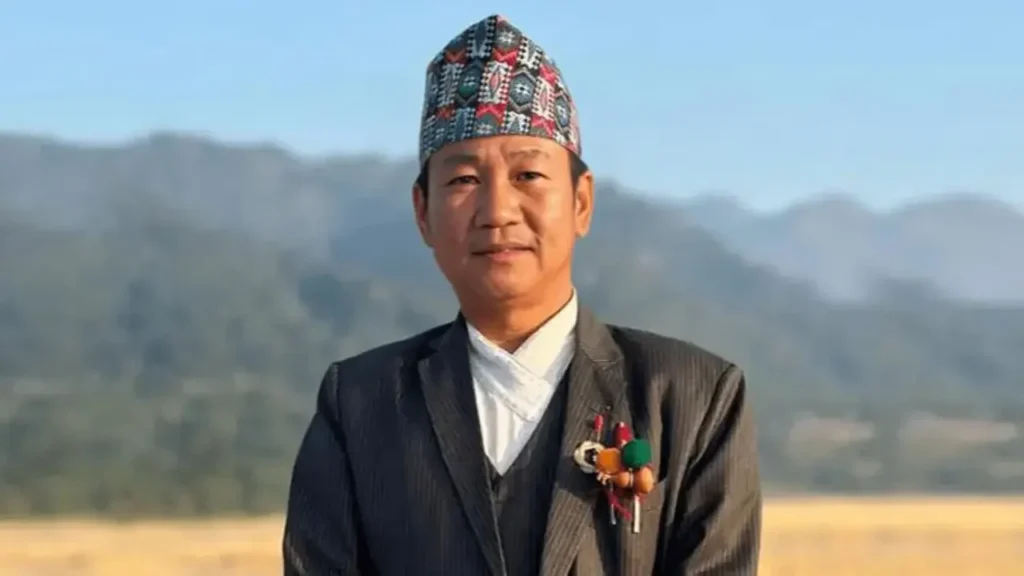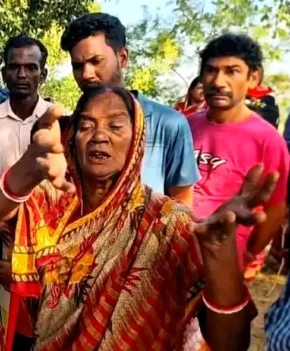Kathmandu is still raw from September’s uprising, its pavements stained with the footprints of a generation that refuses to be silent. In the ashes of that rage, one name keeps echoing far beyond Dharan: Harka Sampang. To many Gen Z protesters, he looks like the answer to a country in decay; a man who carries stones, digs trenches, and delivers water where bureaucrats failed. His philosophy of Shramdan;voluntary labor, feels like a blueprint for a new Nepal. But populism is always seductive at first. Scratch beneath the surface, and his disruptive charisma carries risks Nepal can ill afford.
Sampang’s appeal begins with his unorthodox path. A migrant returnee who came back in 2015, he founded the National Unity Network to fight corruption and illegal resource extraction. His first mayoral bid in 2019 collapsed with just 422 votes, but three years later he stunned Nepal’s political class. Riding a wave of anti-establishment anger, he won Dharan’s mayoral race as an independent with 39.8% of the vote, defeating the machinery of Nepal’s major parties. For youth disgusted by elite “nepo kids” flashing wealth while unemployment soars, Sampang’s win felt like a breach in the wall.
Central to his rise is Shramdan. The philosophy is not abstract but lived: most famously in his 98-day campaign to pipe water 42 kilometers from a distant stream to Dharan. Over 5,000 citizens joined him, wielding spades and sweat to achieve what the bureaucracy had deemed impossible. Sampang didn’t simply order it; he labored shoulder-to-shoulder with volunteers, planting trees, eating the same food, and collapsing in the same mud. It was leadership through participation, a rupture in Nepal’s deep ruler-ruled divide. For disillusioned youth, it offered dignity: a sense that development was theirs, not handed down as charity from a detached elite.
The timing amplified his appeal. When the state moved to silence young voices with a social media ban, Sampang embodied defiance. His disdain for red tape mirrored their chants and stone-throwing. His ascent as a Rai leader from eastern Nepal also symbolized a crack in the Bahun-Chhetri-Newar-Thakuri dominance that has long controlled Nepali politics. A populist outsider, ethnic minority, and hands-on mobilizer; he seemed to tick every box for a country desperate for new energy.
Yet this is where seduction tips into danger. Sampang is no institution-builder. His critics point to his confrontational streak: encouraging disputes, threatening to file defamation cases against journalists , sidelining his deputy mayor. These aren’t isolated errors; they reveal a worldview that treats protocols and criticism as enemies. Populism thrives on dividing the “pure people” from the “corrupt elites.” In practice, it personalizes power and hollows out institutions. If Sampang scaled nationally, his lone-wolf style could degenerate into gridlock; or worse, autocracy and even worse dictatorship.
The risk lies in what he has failed to build. Governance in Nepal, or anywhere else in democratic state, as tedious as it sounds, rests on cadres and committees: booth-level workers who mobilize voters, block-level organizers who mediate disputes, district leaders who manage federal negotiations. This is the unglamorous machinery that keeps states functional. Sampang, despite all his disruptive charm, has shown little talent for this patient institution building . He thrives on spontaneous moments , not structural processes. His clashes with the media and bureaucracy does not showcase him as a mature administrator , ensuring he remains a mayoral sensation rather than a national contender.
The Gen Z uprising revealed the same contradiction. Their fury burnt bright and hot but it burned down structures both physical and organisational. National level parties have been broken and destroyed, a key element in Democratic societies and polities, something that had taken Nepal half a century to build. Unfortunately, the reel scrolling Gen Z, living for the viral moment may not have had the patience to read those vast books on history. And now the very vacuum that they created, haunts them and they scream for people to fill it. Eventually they turned to figures like former Chief Justice Sushila Karki for guidance; proof that even radicals understand governance cannot be hashtagged into being.
A disruptor without allies is doomed to remain local. Sampang’s genius is mobilization, but his confrontational instinct repels the bridge-builders who could translate energy into enduring power.
And so the tragedy is clear. Sampang offers Nepal a glimpse of what could be: a politics where citizens own development, where dignity is restored through shared labor. But the very traits that propelled him, the defiance, the disdain for rules, the solo crusade, are the ones that make him unscalable. Without the discipline of networks and the humility of consensus, his populism risks collapsing into chaos or cult.
Nepal cannot afford that gamble. Not after 16 governments in 16 years. Not with 2,000 citizens leaving daily for foreign jobs. Not with corruption still corroding every institution. The country needs disruptors, yes, but disruptors who can also weave stability. Harka Sampang, for all his brilliance in Dharan, is not that figure, Sushila Karki is. He will remain what he already is: a local legend, a symbol of both the power and the peril of populism in a fragile republic.







